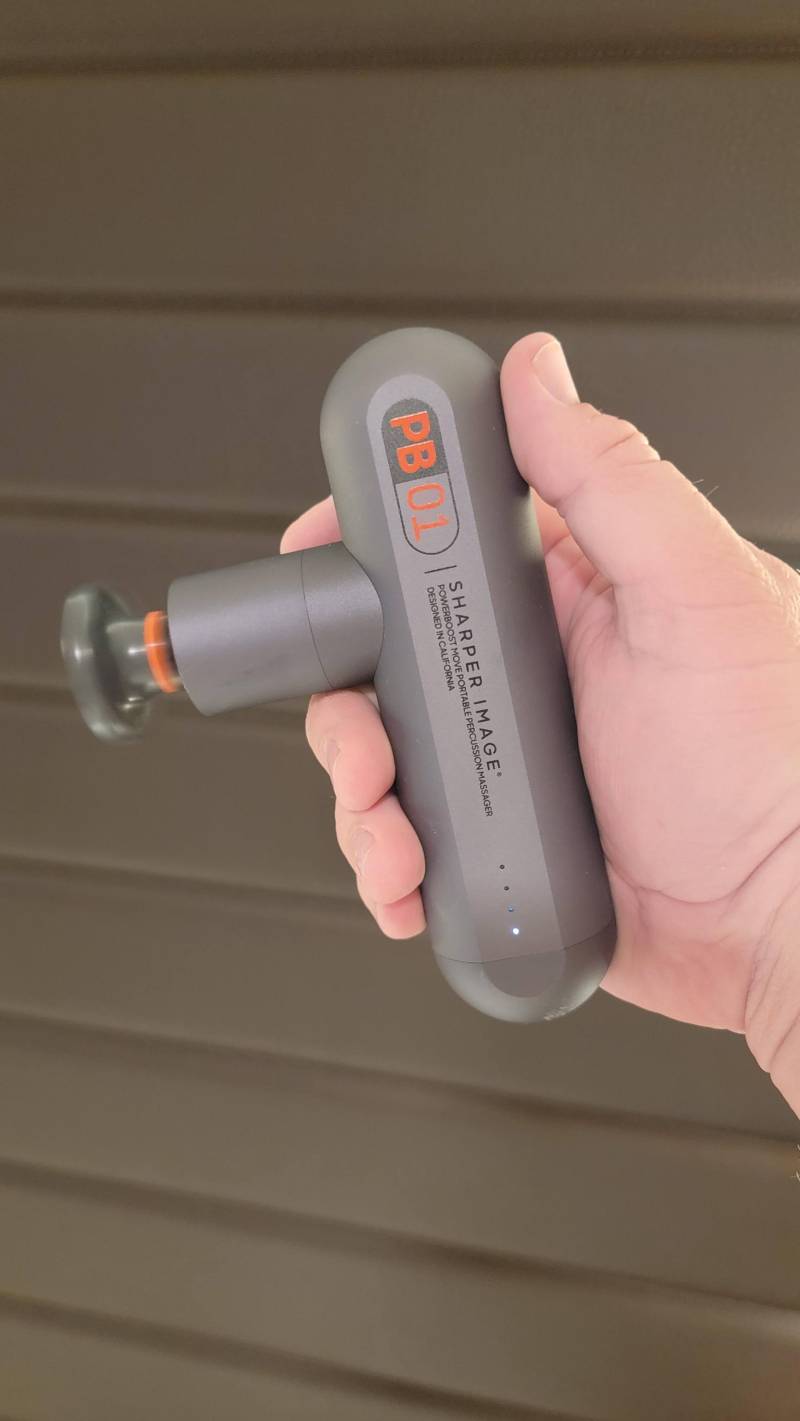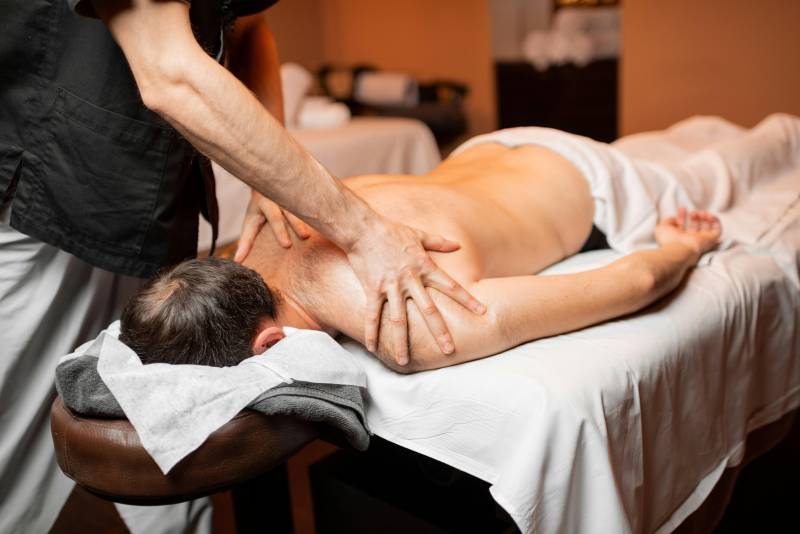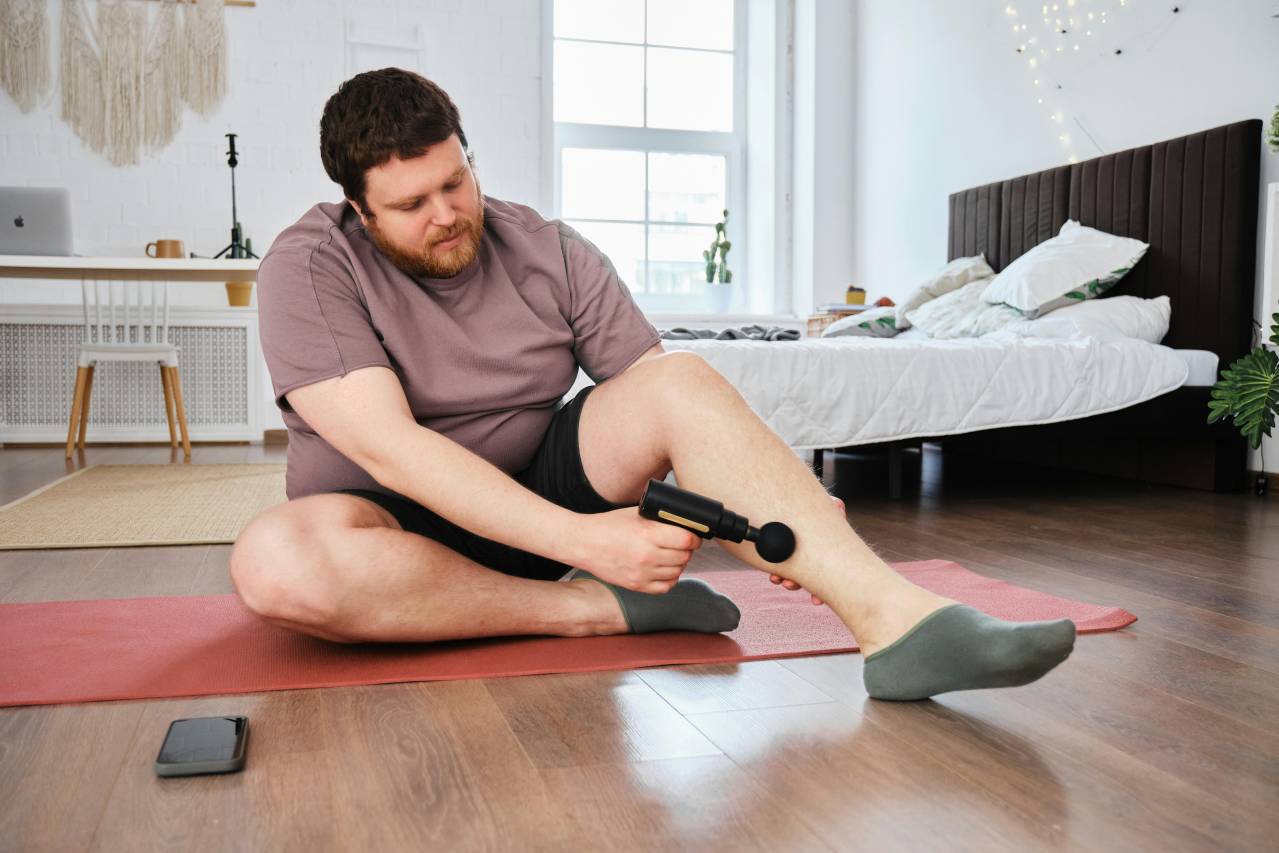Look, between the constant travel for work, the endless hours hunched over my desk answering emails, and the not-so-gentle reminders from my body when I'm helping lift my father's wheelchair into the car – my muscles are constantly screaming for relief. I've learned the hard way that ignoring those little aches and pains doesn't make them disappear; it just invites them to bring friends and stay longer.
...
Percussion massagers can benefit any man dealing with muscle tension, soreness, or recovery needs, whether from desk work, physical labor, family obligations, travel, or athletic activities. Here are the essential points every man should understand:
- Percussion massagers work by delivering rapid pulses (1,200-3,200 per minute) that penetrate deep into muscle tissue, increasing blood flow and breaking up adhesions more effectively than traditional vibration therapy.
- Regular use can significantly reduce recovery time, decrease inflammation, enhance range of motion, and provide drug-free pain relief when used correctly and consistently.
- For optimal results, use lighter pressure and higher speeds before physical activity to prepare muscles, and moderate speeds with slightly more pressure afterward to promote recovery.
- When selecting a device, prioritize amplitude (depth of percussion), stall force (resistance to pressure), battery life, and noise level over flashy features that add little therapeutic value.
- While powerful and effective, percussion massagers should never be used directly on bones, joints, nerves, or injured areas, and should be introduced gradually to avoid soreness from excessive initial treatment.
- Pros and Cons Of Using A Percussion Massager
- The Science Behind Percussion Therapy
- Types of Percussion Massagers Every Man Should Know
- Essential Features to Look For
- Percussion Massage vs. Other Massage Technologies
- Integrating a Percussion Massager Into Your Routine
- Percussion Massagers: The Modern Man's Essential Recovery Tool
That's why percussion massagers have become my secret weapon for survival. You know, we've come a long way from those "back massagers" that everyone knew weren't really for backs (I'm looking at you, Hitachi Magic Wand). Those vibrating devices that somehow found their way into bedside drawers for an entirely different kind of stress relief are distant ancestors to today's sophisticated percussion technology. The modern massage gun offers legitimate therapeutic benefits that can keep a busy guy like me functioning without popping ibuprofen like candy.
Thanks to various brand partners sending me products for review and my visits to some of America's top spas, I've developed a pretty comprehensive understanding of what separates the genuinely therapeutic from the overhyped gimmicks. Let me tell you why every man dealing with life's physical demands needs a percussion massager in his wellness arsenal.
Pros and Cons Of Using A Percussion Massager
When it comes to the advantages of using percussion massagers, they often are looked at as being somewhat of a mystical cure-all device. The reality though is that they do offer all sorts of physical benefits, such as improved circulation, enhanced performance, and increased muscle mobility. However, it can also lead to damage if used improperly by applying too much pressure to the wrong areas for too long.
| Pros | Cons |
|---|---|
| Enhances Muscle Recovery - Helps in reducing muscle soreness and speeding up recovery time | Can Be Overused - Improper or excessive use can lead to muscle damage or worsen existing injuries |
| Improves Blood Circulation - Increases blood flow to targeted areas, promoting healing | Not Suitable for All Conditions - May not be appropriate for individuals with certain health conditions |
| Reduces Stress and Tension - Provides deep tissue massage, promoting relaxation | Noise Level - Some models can be quite loud and disruptive |
| Increases Flexibility and Range of Motion - Helps loosen tight muscles and tendons | Cost - High-quality percussion massagers can be expensive |
| Convenient and Easy to Use - Portable and available whenever you need relief | Requires Knowledge to Use Effectively - Proper technique matters |
| Customizable Intensity - Adjustable settings for different needs | Dependency - Over-reliance can lead to neglecting underlying issues |
Despite the impressive benefits, there are risks associated with incorrect usage. Proper technique matters – I've learned that more pressure isn't always better, especially when dealing with particularly sensitive areas like the neck or lower back.
The Science Behind Percussion Therapy
After experiencing countless massages at spas across the country and testing dozens of devices sent for review, I've discovered there's actual science behind why that pulsating sensation brings such sweet relief to my travel-weary shoulders and desk-bound back.
How Percussion Massage Works
At its core, percussion therapy delivers rapid, concentrated pulses of pressure that penetrate deep into muscle tissue. Unlike traditional massage techniques, percussion therapy delivers between 1,200 to 3,200 percussions per minute, reaching muscle groups that would otherwise be difficult to access.
This high-frequency stimulation works by temporarily overriding pain signals to the brain – essentially creating a traffic jam in your nervous system that blocks pain perception while promoting healing. It's like pressing the reset button on angry muscle fibers.
Medical Benefits Worth Noting
The benefits extend far beyond just "feeling good." Research has demonstrated several measurable advantages:
- Increased Blood Flow: Studies show percussion therapy can increase local blood circulation by up to 30%
- Reduced Inflammation: Regular use has been shown to reduce inflammatory markers in muscle tissue
- Enhanced Range of Motion: Research documents significant improvements in flexibility following consistent treatments
- Hormonal Benefits: Evidence suggests percussion massage may increase endorphins and decrease cortisol levels
When you're constantly on the go like me, these benefits translate to fewer days derailed by nagging discomfort and more productive hours.

Types of Percussion Massagers Every Man Should Know
The market for these devices has exploded, and having tested everything from budget options to professional-grade equipment, I can help you navigate the options without wasting money on glorified toys that gather dust.
Handheld Percussion Massagers
The most common type is one that offers excellent maneuverability and control. Premium models like the Theragun Pro and Hypervolt Plus set the standard with their power, battery life, and quiet operation.
Massage Guns
Though often used interchangeably with "percussion massager," massage guns specifically refer to pistol-shaped devices. Their design allows one-handed operation for precise targeting of specific muscle groups. A great example of this is the Powerboost Pro+ that we reviewed here a bit ago.
The key feature here is "stall force" – how much pressure the device can handle before the motor slows down. This matters tremendously when you're trying to work out deep knots in larger muscle groups.
Massage Chairs and Pads
These integrate percussion technology into a seated experience for comprehensive treatment. While the chairs are significant investments, the pads offer an affordable alternative while still providing hands-free operation—perfect for addressing back issues after a long day of travel.
Compact Travel Models
As someone frequently living out of hotel rooms, these compact devices have been game-changers. They sacrifice some power for portability but still deliver enough therapeutic benefit to justify the space in your luggage. We especially love the Powerboost Move that we reviewed recently.
Essential Features to Look For
After receiving countless massagers for review and experiencing professional-grade equipment at top spas, I've developed a keen eye for which features matter and which are just marketing fluff. Whether they are simple vibrating massagers, percussion massagers, or rolling / kneading massage chairs, there's always quite a range of different options and features when it comes to finding the right massage tool.
Power and Performance Specifications
Focus on these key metrics when evaluating options:
- Amplitude: Measured in millimeters, this indicates how far the massage head moves with each percussion. Higher amplitude (12-16mm) delivers deeper penetration
- Stall Force: Professional-grade devices offer 40-60 pounds of stall force, compared to 20-40 pounds in consumer models
- Percussion Range: Quality devices offer speeds from 1,200 to 3,200 PPM with multiple adjustment settings
Battery Life and Charging
Nothing kills the massage vibe faster than a dead battery halfway through your session:
- Runtime: Premium models offer 2-3 hours of operation, while budget options may last only 30-60 minutes
- Battery Indicators: Clear visual indicators prevent frustrating mid-session shutdowns
- Charging Speed: Quick-charge capability is increasingly common and incredibly useful
Attachment Variety
The versatility of your massager depends largely on its attachments:
- Ball Attachments: General-purpose options for most muscle groups
- Flat Heads: Better for larger muscle areas
- Fork/Spine Attachments: Designed to work alongside the spine without direct vertebrae contact
- Bullet Attachments: Perfect for pinpoint trigger point therapy
A quality massager should include at least 4-6 interchangeable heads to address different needs.
Noise Level
The acoustic footprint matters, especially in shared spaces:
- Decibel Rating: Premium models operate at conversation levels (45-60 decibels), while budget options can sound like vacuum cleaners (70-80 decibels)
- Brushless Motors: The technology behind quieter operation and greater durability

Percussion Massage vs. Other Massage Technologies
Having experienced everything from traditional hands-on massage at luxury spas to the latest electronic devices, I can offer perspective on how percussion technology compares.
Percussion vs. Vibration Therapy
Though often confused, these are distinct approaches:
- Percussion Therapy: Delivers deeper tissue penetration (12-16mm) at lower frequencies
- Vibration Therapy: Provides surface-level stimulation (2-4mm) at higher frequencies
This represents the evolution from those notorious Hitachi Magic Wands that somehow always ended up being used for activities other than actual back massage. Modern percussion technology delivers targeted therapeutic benefits that those simple vibrating devices never could.
Percussion vs. Traditional Manual Massage
While nothing quite replaces skilled human hands, percussion devices offer distinct advantages:
- Consistency: Devices maintain intensity without fatigue
- Accessibility: Available whenever you need relief, no appointment necessary
- Cost Efficiency: Despite the initial investment, it quickly becomes more economical than regular professional appointments
Percussion vs. Foam Rolling
Both address myofascial tension but in different ways:
- Active vs. Passive: Foam rolling requires your engagement and movement
- Precision: Percussion therapy targets specific points more effectively
- Effort Required: Percussion requires significantly less physical exertion
Integrating a Percussion Massager Into Your Routine
As someone managing the physical demands of desk work, travel, and family obligations, I've developed specific approaches for incorporating percussion massage into daily life without it becoming another chore.
Before Physically Demanding Activities
A quick pre-activity session increases blood flow and prepares muscles for the demands ahead:
- Use higher speeds (2800-3200 PPM) with lighter pressure
- Spend 30-60 seconds per major muscle group
- Focus on areas you know will be stressed by upcoming activities
This has been particularly helpful before I know I'll be lifting my father's wheelchair or carrying heavy luggage through airports.
Recovery Protocol
The most common application remains post-activity recovery:
- Begin within 30 minutes after completing demanding tasks
- Start with moderate speed settings (2000-2400 PPM)
- Spend 1-2 minutes per muscle group, with additional time on particularly worked areas
- Use sweeping motions rather than staying static on one point
Desk Warrior Maintenance
The desk-bound lifestyle wreaks havoc on our bodies:
- Morning: 5 minutes targeting the posterior chain to combat sitting-related tightness
- Mid-day: 3-5 minutes on neck and shoulders to release tension
- Evening: 10 minutes of comprehensive treatment to counteract the day's strain
Travel Recovery Strategies
For frequent travelers, percussion massage addresses the unique physical challenges of life on the road:
- Pre-flight treatment improves circulation during long flights
- Hotel room sessions after carrying luggage prevent shoulder and neck issues
- Targeted work on hip flexors after extended sitting prevents lower back problems
Percussion Massagers: The Modern Man's Essential Recovery Tool
The percussion massager has become my non-negotiable tool for maintaining physical function amid life's demands. While nothing replaces the personalized touch of a skilled massage therapist (and I've experienced some fantastic ones at spas across the country), modern percussion technology provides an accessible alternative for daily maintenance.
The key is selecting the right device for your specific needs and learning proper technique. What might seem like just another gadget can become an essential component of self-care when used correctly – one that pays dividends in comfort and functionality.
Having evolved from those infamous vibrating "massagers" of yesteryear that spent more time in bedrooms than on actual back pain, today's percussion technology represents legitimate therapeutic innovation that can help busy men stay functional despite physical demands. The investment in both the device and learning proper technique may be the most important health decision you make this year.
